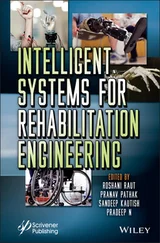Anil K. Chopra - Earthquake Engineering for Concrete Dams
Здесь есть возможность читать онлайн «Anil K. Chopra - Earthquake Engineering for Concrete Dams» — ознакомительный отрывок электронной книги совершенно бесплатно, а после прочтения отрывка купить полную версию. В некоторых случаях можно слушать аудио, скачать через торрент в формате fb2 и присутствует краткое содержание. Жанр: unrecognised, на английском языке. Описание произведения, (предисловие) а так же отзывы посетителей доступны на портале библиотеки ЛибКат.
- Название:Earthquake Engineering for Concrete Dams
- Автор:
- Жанр:
- Год:неизвестен
- ISBN:нет данных
- Рейтинг книги:4 / 5. Голосов: 1
-
Избранное:Добавить в избранное
- Отзывы:
-
Ваша оценка:
Earthquake Engineering for Concrete Dams: краткое содержание, описание и аннотация
Предлагаем к чтению аннотацию, описание, краткое содержание или предисловие (зависит от того, что написал сам автор книги «Earthquake Engineering for Concrete Dams»). Если вы не нашли необходимую информацию о книге — напишите в комментариях, мы постараемся отыскать её.
offers a comprehensive, integrated view of this progress over the last fifty years. The book offers an understanding of the limitations of the various methods of dynamic analysis used in practice and develops modern methods that overcome these limitations.
This important book:
Develops procedures for dynamic analysis of two-dimensional and three-dimensional models of concrete dams Identifies system parameters that influence their response Demonstrates the effects of dam–water–foundation interaction on earthquake response Identifies factors that must be included in earthquake analysis of concrete dams Examines design earthquakes as defined by various regulatory bodies and organizations Presents modern methods for establishing design spectra and selecting ground motions Illustrates application of dynamic analysis procedures to the design of new dams and safety evaluation of existing dams. Written for graduate students, researchers, and professional engineers,
offers a comprehensive view of the current procedures and methods for seismic analysis, design, and safety evaluation of concrete dams.



 . For convenience later in defining the added hydrodynamic mass, the preceding pressure functions are defined for the positive x ‐direction upstream, thus giving algebraic signs opposite those of the corresponding equations in Section 2.3, where the positive x ‐direction was downstream.
. For convenience later in defining the added hydrodynamic mass, the preceding pressure functions are defined for the positive x ‐direction upstream, thus giving algebraic signs opposite those of the corresponding equations in Section 2.3, where the positive x ‐direction was downstream. for the modal coordinate associated with the fundamental vibration mode of the dam, Eq. (2.6.1), is a complicated function of excitation frequency ω that contains frequency‐dependent hydrodynamic terms. To develop a simplified analytical procedure, the dam–water system will be modeled by an equivalent SDF system with frequency‐independent values for the hydrodynamic terms. Such a procedure, developed by Chopra (1978) for dam–water systems with non‐absorptive reservoir bottom and later extended to include reservoir bottom absorption (Fenves and Chopra 1985c), is presented next.
for the modal coordinate associated with the fundamental vibration mode of the dam, Eq. (2.6.1), is a complicated function of excitation frequency ω that contains frequency‐dependent hydrodynamic terms. To develop a simplified analytical procedure, the dam–water system will be modeled by an equivalent SDF system with frequency‐independent values for the hydrodynamic terms. Such a procedure, developed by Chopra (1978) for dam–water systems with non‐absorptive reservoir bottom and later extended to include reservoir bottom absorption (Fenves and Chopra 1985c), is presented next. , of the equivalent SDF system is defined as
, of the equivalent SDF system is defined as


 of the equivalent SDF system approximates the fundamental resonant frequency of the dam–water system. If the reservoir bottom is absorptive, m a( y ) is complex valued. Thus, it is not a mass quantity in the usual sense; only its real‐valued component contributes to an added mass, whereas the imaginary‐valued component implies an added damping. Furthermore, this added mass representing hydrodynamic effects on a flexible dam differs from the one in Eq. (2.3.25), which was determined assuming the dam to be rigid. It is inappropriate to use the latter in dynamic analysis of dams because they are flexible structures.
of the equivalent SDF system approximates the fundamental resonant frequency of the dam–water system. If the reservoir bottom is absorptive, m a( y ) is complex valued. Thus, it is not a mass quantity in the usual sense; only its real‐valued component contributes to an added mass, whereas the imaginary‐valued component implies an added damping. Furthermore, this added mass representing hydrodynamic effects on a flexible dam differs from the one in Eq. (2.3.25), which was determined assuming the dam to be rigid. It is inappropriate to use the latter in dynamic analysis of dams because they are flexible structures.
 ,
,  , and
, and  are obtained by substituting Eq. (2.6.5)in the standard definitions of generalized mass, damping, and force (Chopra 2017, Chapter 17):
are obtained by substituting Eq. (2.6.5)in the standard definitions of generalized mass, damping, and force (Chopra 2017, Chapter 17):





 is replaced by the resonant frequency
is replaced by the resonant frequency  , Eq. (2.6.7)will give the same resonant response as the rigorous Eq. (2.6.1). Using the solutions for p 0( y , ω ) and p 1( y , ω ) in Eq. (2.6.3), replacing ω by
, Eq. (2.6.7)will give the same resonant response as the rigorous Eq. (2.6.1). Using the solutions for p 0( y , ω ) and p 1( y , ω ) in Eq. (2.6.3), replacing ω by  in C 1, and recalling Eq. (2.6.2)for the definition of B 0( ω ) and B 1( ω ), Eq. (2.6.9)becomes
in C 1, and recalling Eq. (2.6.2)for the definition of B 0( ω ) and B 1( ω ), Eq. (2.6.9)becomes












